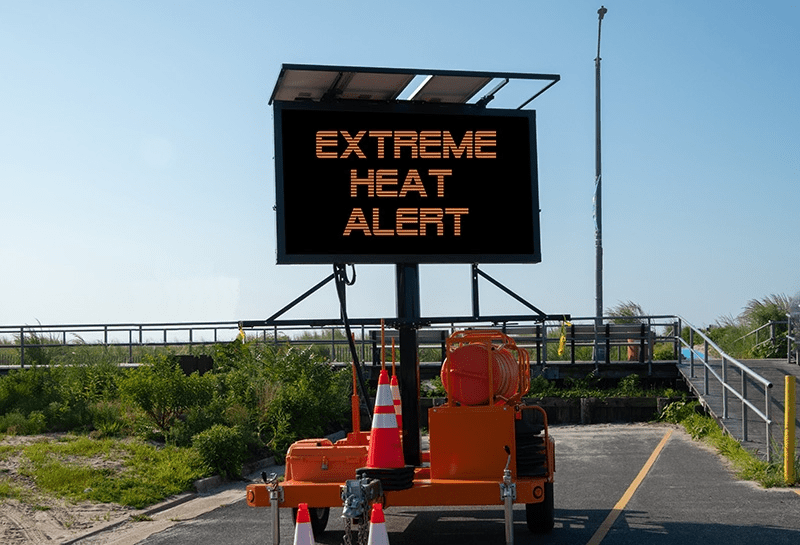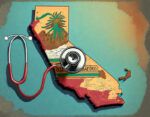Battling Extreme Heat… Again
Remember when California was rocked with a hurricane? Gosh it feels like it was only a week ago. Oh wait, it was. Well, California decided that wasn’t a good look for us, so sent us the scorching heat that we are much more comfortable with. Nonetheless, we still must the implications that come with extreme heat. But amidst the challenges, local organizations and experts are coming together to build resilience and protect vulnerable populations.
Speakers

- Braden Kay, Extreme Heat and Community Resilience Program Manager, Governor’s Office of Planning and Research
- Jonathan Pilch, Executive Director, Watsonville Wetlands Watch
- Esther Bejarano, Programs Manager, Comite Civico del Valle Inc.
- Dr. Sharon Okonkwo-Holmes, Family Medicine Physician, Kaiser Permanente Southern California
In a recent media briefing hosted by Ethnic Media Services on August 29th, representatives from Heat Ready CA, the California Department of Public Health, and healthcare providers discussed the impacts of extreme heat and the innovative solutions being implemented across the state.
Being Prepared for the Heat
e443As with all weather related events, being assured that the community is well informed and prepared is of the utmost concern. Braden Kay, a representative from Heat Ready CA, emphasized the importance of getting people to basic resources and building awareness. “The more that you can get people to the basic resources of Heat Ready, and help with that awareness building, the better prepared we’ll be,” he said.
But awareness is just the first step. As Esther Bejarano, another expert in the field, pointed out, “It’s here. Take action. We need to be prepared.” A sentiment echoed by all speakers, emphasizing the need for collective action and engagement with policy.
Taking Action Against Challenges
Sandy Close, the moderator of the discussion, asked each speaker to share their most important message or headline for the media to take away from the briefing. Jonathan Pilch, a representative from CDPH, believes we must reach out to “those who are most at risk, including the elderly, those with chronic medical conditions, and those who are socially isolated.”
Dr. Okonkwo-Holmes, a healthcare provider, spoke about the challenges of addressing the health impacts of the rising temperatures. “We’re seeing more cases of heat exhaustion and heat stroke, especially among vulnerable populations,” he said,”but we’re also seeing indirect impacts, like worsening air quality and increased risk of wildfires.”
California also being breeding ground for outstanding innovation, there are some avenues for mitigation. For example, some schools are incorporating green spaces to protect students from the sun. “We’re seeing more and more schools installing shade structures and planting trees to create cool, shaded areas for students to play and learn,” said Braden Kay.
Another solution is community cooling centers, which provide a safe and cool place for people to escape the heat. “We’re working with local organizations to identify and establish cooling centers in areas that are most at risk,” said Esther Bejarano.
But perhaps the most important solution is collective action. As Braden Kay emphasized, “We need to be working together on extreme heat.” This sentiment was echoed by all of the speakers, who emphasized the need for collaboration and engagement with policy.
Final Thoughts
As the discussion came to a close, Sandy Close asked each speaker to share their final thoughts. Pilch started by calling for the community to think about, “extreme heat as a long-term challenge, and we need to be building resilience and preparedness into our communities and systems.”
Dr. Okonkwo-Holmes echoed this sentiment, “thinking about the health impacts of extreme heat not just in the short term, but in the long term as well. We need to be investing in prevention and preparedness.” In the Golden State, heat is not leaving us. We will experience heatwaves until the sun doesn’t burn out, so we need to look long term solutions.
Esther Bejarano wants to emphasize the important of “working directly with communities to build awareness and preparedness. We need to be listening to their needs and concerns, and working together to find solutions.” These communities are often unrepresented and tend to be poorer. Hearing their struggles will help us come up with effective solutions that they can actually implement.
Braden Kay summed it up best, saying, “We need to be working together on extreme heat. We need to be building awareness, preparedness, and resilience into our communities and systems. And we need to be doing it now, before it’s too late.”
The heat is not going anywhere. The challenge of extreme heat will only become more urgent. Working together to take action now, we can build resilience and protect vulnerable populations. And with that, Bejararo concluded, “It’s here. Take action. We need to be prepared.”


